July 30 – 31: For the past few years, a Red-billed Tropicbird has unaccountably chosen a rocky island 25 miles off the Maine coast to spend its summers. As its name implies, this is a tropical species, and northern New England is not exactly a place where one might expect to find one, but it continues there nonetheless. I had seen this species once before, in the Galapagos, but I couldn’t resist the lure of one in the ABA area, so Nancy and I planned a mid-week drive down east to Rockland.
Fortuitously, three Little Gulls had been discovered the previous week at Laudholm Beach in Wells, which just happens to be directly on the way north, just off I-95 between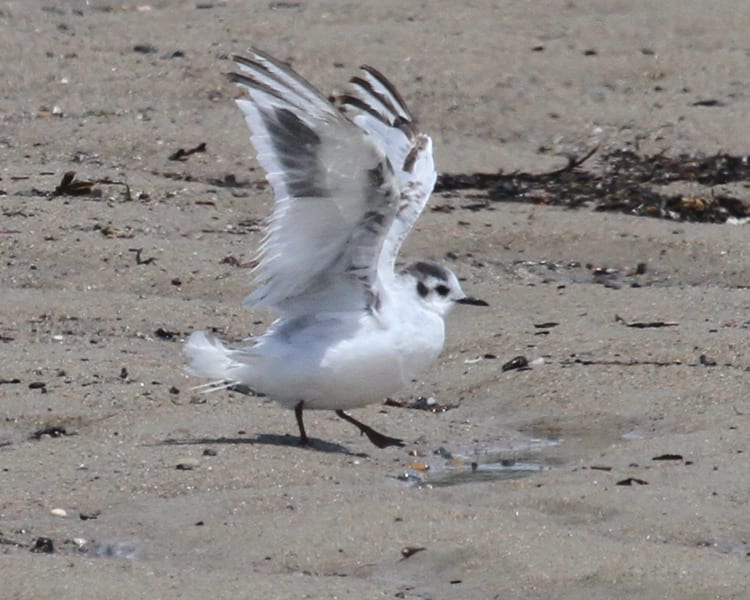 Ogunquit and Kennebunk, and Little Gull was a life bird, so a stop there became the first priority. From the parking area at Laudholm Farm, take the barrier trail .6 mile all the way down to the beach, then head north on the beach, past the cordoned off Piping Plover nesting area, all the way to the estuary. There were countless gulls, terns, and shorebirds, but the Little Gull tends to hang out with Bonaparte’s Gulls and Common Terns, and it didn’t take long to
Ogunquit and Kennebunk, and Little Gull was a life bird, so a stop there became the first priority. From the parking area at Laudholm Farm, take the barrier trail .6 mile all the way down to the beach, then head north on the beach, past the cordoned off Piping Plover nesting area, all the way to the estuary. There were countless gulls, terns, and shorebirds, but the Little Gull tends to hang out with Bonaparte’s Gulls and Common Terns, and it didn’t take long to  pick out one gull smaller than the Bonaparte’s and just slightly larger, rounder, and plumper than the terns. The Little Gull was an immature, lacking the adult’s black head, but featuring a dark cap, black ear spot, and dark ulnar bar to go with the short black bill. The gull stayed around for some twenty minutes and then flew off, after which I was unable to relocate it. I felt lucky, since had I arrived a half hour later I might well not have seen it at all.
pick out one gull smaller than the Bonaparte’s and just slightly larger, rounder, and plumper than the terns. The Little Gull was an immature, lacking the adult’s black head, but featuring a dark cap, black ear spot, and dark ulnar bar to go with the short black bill. The gull stayed around for some twenty minutes and then flew off, after which I was unable to relocate it. I felt lucky, since had I arrived a half hour later I might well not have seen it at all.
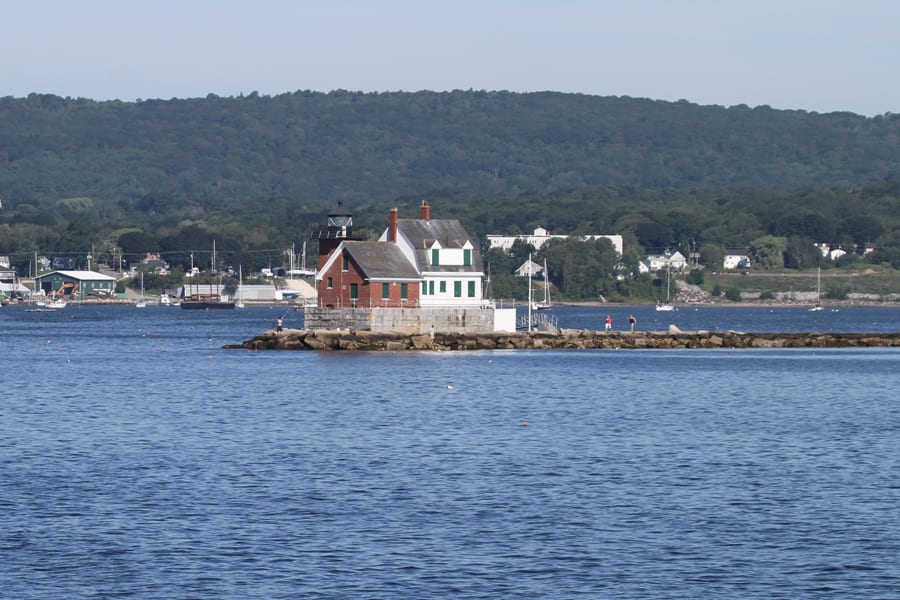 Next it was on to Rockland and an overnight stay before catching the 8:45 AM ferry for the hour and fifteen minute ride over to Vinalhaven Island, “the lobster
Next it was on to Rockland and an overnight stay before catching the 8:45 AM ferry for the hour and fifteen minute ride over to Vinalhaven Island, “the lobster 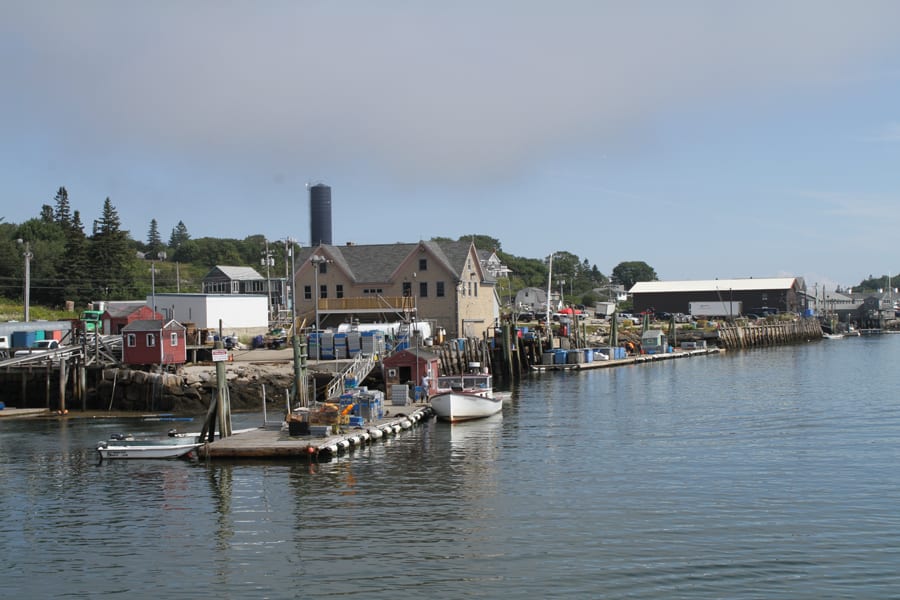 capital of the world.” The ferry has limited space for cars and it is possible to get stranded on the island because the priority system in place there is such that you could wait for days for a slot for your car on the return trip, so we followed the advice we had been given and (wisely) left the car on the mainland. It was only a ten minute walk along Vinalhaven’s Main Street from the ferry terminal to the Payne Homestead B&B.
capital of the world.” The ferry has limited space for cars and it is possible to get stranded on the island because the priority system in place there is such that you could wait for days for a slot for your car on the return trip, so we followed the advice we had been given and (wisely) left the car on the mainland. It was only a ten minute walk along Vinalhaven’s Main Street from the ferry terminal to the Payne Homestead B&B.
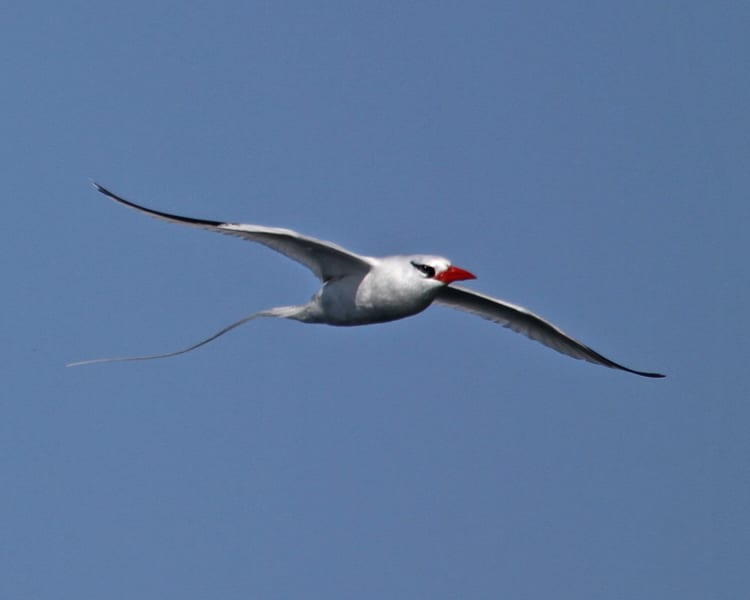 John Drury has grown a small cottage business taking birders out to Seal Island on his converted lobster boat, the SKUA, to see the Red-billed Tropicbird, as well as other seabirds. John met me at the dock adjacent to the ferry at 2 PM for the 90-minute ride out to Seal Island, where he had found the tropicbird to be showing up around 3:45 PM each afternoon. The weather was perfect, and on this day the bird
John Drury has grown a small cottage business taking birders out to Seal Island on his converted lobster boat, the SKUA, to see the Red-billed Tropicbird, as well as other seabirds. John met me at the dock adjacent to the ferry at 2 PM for the 90-minute ride out to Seal Island, where he had found the tropicbird to be showing up around 3:45 PM each afternoon. The weather was perfect, and on this day the bird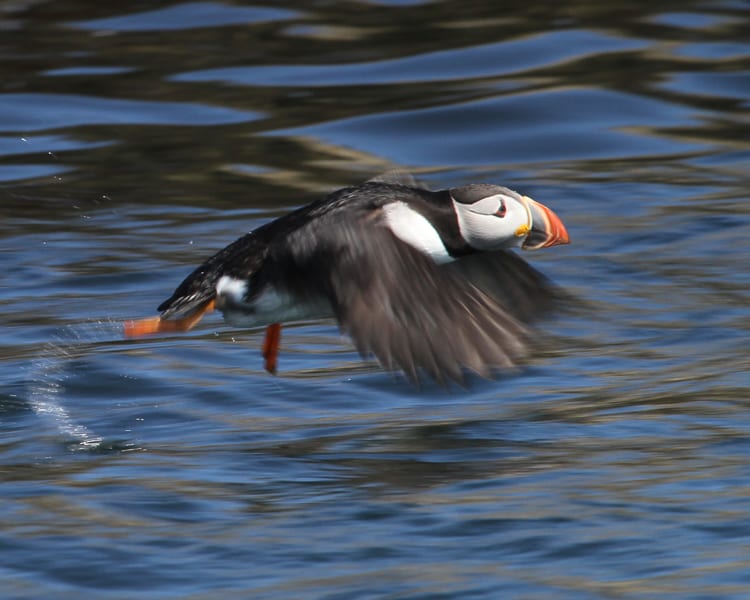 dutifully turned up at exactly 4 PM – not too bad! Over the course of 45 minutes it made numerous passes over the boat allowing ample opportunity for good photos, and was still there when we finally had to start back.
dutifully turned up at exactly 4 PM – not too bad! Over the course of 45 minutes it made numerous passes over the boat allowing ample opportunity for good photos, and was still there when we finally had to start back.
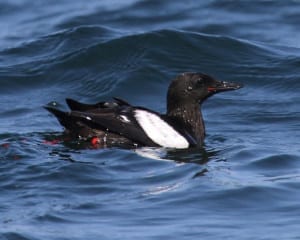 In the same general area we counted, among others, many Atlantic Puffins, a number of Black Guillemots, numerous Northern Gannets and Common Eiders, some twenty Great Cormorants, a small
In the same general area we counted, among others, many Atlantic Puffins, a number of Black Guillemots, numerous Northern Gannets and Common Eiders, some twenty Great Cormorants, a small 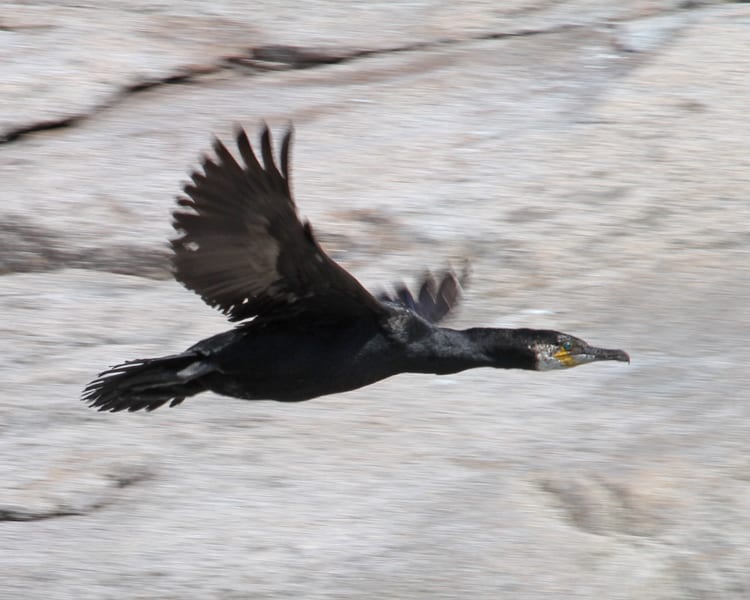 colony of Bald Eagles, and a single Razorbill. John also briefly spotted one very distant Manx Shearwater which turned out to be the only shearwater seen all day.
colony of Bald Eagles, and a single Razorbill. John also briefly spotted one very distant Manx Shearwater which turned out to be the only shearwater seen all day.
As an interesting aside, Keith Mueller of Killingworth, CT, 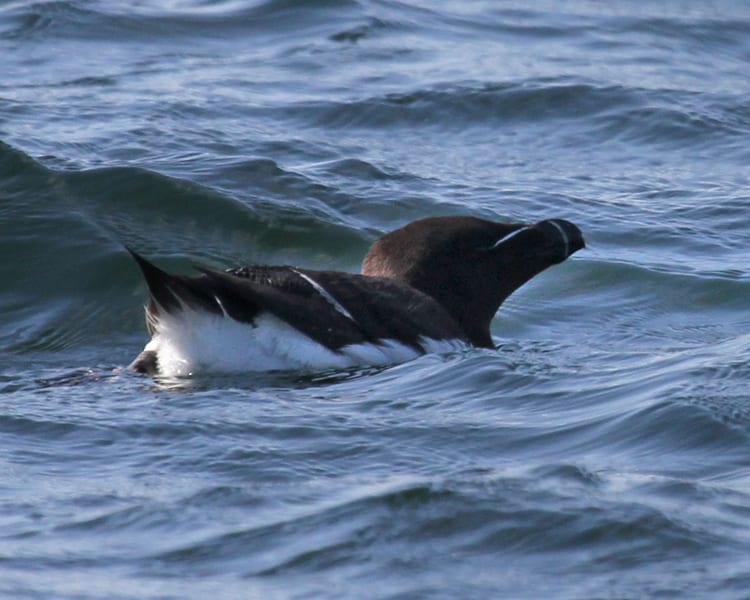 who makes beautiful lifelike decoys, recently made the Vinalhaven – Seal Island trip and presented John Drury with
who makes beautiful lifelike decoys, recently made the Vinalhaven – Seal Island trip and presented John Drury with 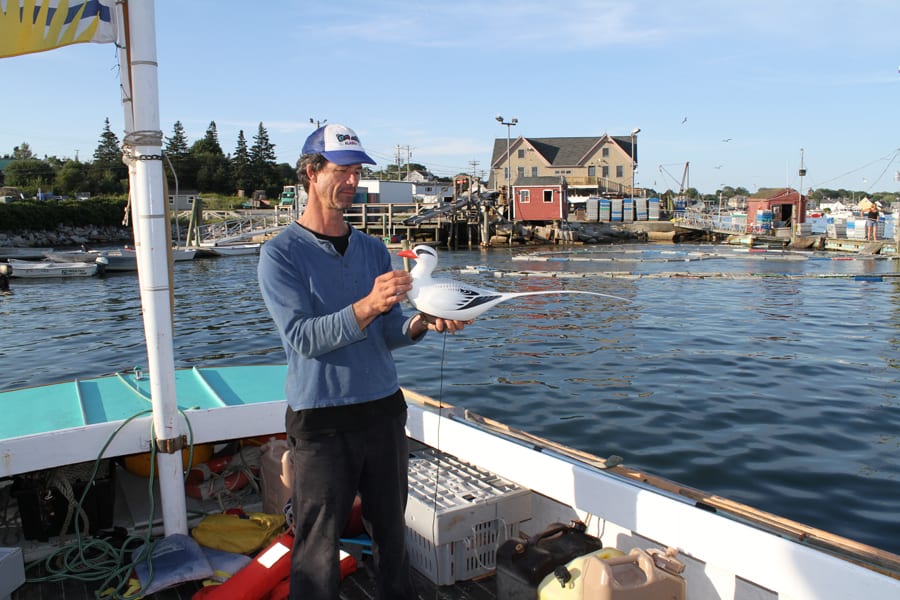 a female Red-billed Tropicbird decoy. Together they deployed the decoy and to their amazement the Red-billed Tropicbird made his usual passes, but then alighted on the water and actually attempted to mate with the decoy. For obvious reasons, John is no longer deploying the decoy.
a female Red-billed Tropicbird decoy. Together they deployed the decoy and to their amazement the Red-billed Tropicbird made his usual passes, but then alighted on the water and actually attempted to mate with the decoy. For obvious reasons, John is no longer deploying the decoy.


